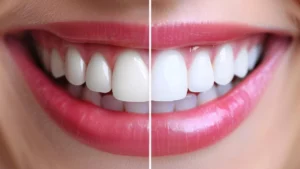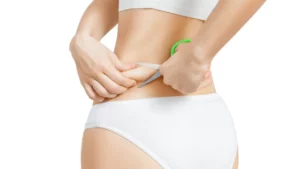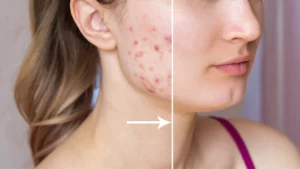Table of Contents
No matter your skin type, acne can sprout up from time to time. Yes, even if you have dry skin, the wrong skincare habits can cause acne. Following the right skincare tips, using the right ingredients and avoiding troublesome ones can help keep acne at bay. Read on for our guide to preventing acne, no matter your skin type.
Types of skin and the acne prevention skincare tips you should follow
For those of you with normal skin, you’re scientifically not prone to acne unless you’re nearing your menstrual cycle or are dealing with a hormonal imbalance. If either is the case, it is worth it to follow skincare tips for oily skin to keep excess sebum and random acne off your skin.
If you have combination or oily skin
- Skincare products to avoid: Stay away from all cream- or oil-based products. Anything too heavy can make you breakout.
- Ingredients to avoid for home remedies: You may be tempted to use homemade clay masks but it’s best to avoid them. Using detoxifying ingredients in lab-tested formulations is a safer choice for you.
- Skincare products to use: Opt for chemical exfoliators, gel-based cleansers, pore clearing toners, light and non-comedogenic moisturisers and water-based, sebum-controlling serums.
- Best ingredients to use: Clays and mud-based masks work very well to reduce excess oil production and leave your skin feeling fresh. Incorporate AHAs and BHAs in your skincare routine in the form of an exfoliator or toner to keep your pores fresh at all times.
If you have acne-prone skin
- Skincare products to avoid: Just like the tips for oily skin, stay away from all cream- or oil-based products. Anything too heavy can make you breakout.
- Ingredients to avoid for home remedies: You may be tempted to use homemade clay masks but it’s best to avoid them. Using detoxifying ingredients in lab-tested formulations is a safer choice for you. Also, do not use ingredients like toothpaste, baking soda or lemon on active acne in the hopes to minimise it.
- Skincare products to use: Opt for gel-based cleansers, pore clearing toners, light and non-comedogenic moisturisers and water-based, sebum-controlling serums. Also incorporate an acne-busting spot treatment in your routine, in case a bump was to occur.
- Best ingredients to use: Ingredients like salicylic acid, tea tree, azelaic acid and benzoyl peroxide are acne-busting ingredients that deserve to be in your skincare products. Clays and mud-based masks work very well to reduce excess oil production and leave your skin feeling fresh.
If you have dry skin
Skincare products to avoid: Ditch all skincare products that contain alcohol and any overly exfoliating or drying ingredients.
Ingredients to avoid for home remedies: Don’t use any homemade peels, clay or charcoal-based products as a treatment since they can further dry your skin.
Skincare products to use: Choose a cream cleanser, hydrating serum and moisturiser and nourishing facial oils to nurture your dry skin. To gently exfoliate, use a chemical exfoliator with lactic acid or PHAs to do so, 1-2 times a week.
Best ingredients to use: Ceramides, hyaluronic acid, urea, PHAs, glycerin and antioxidants should feature in your skincare products.
Types of acne you may be suffering from
Acne can be of two types, inflammatory and non-inflammatory. These categories have multiple subdivisions which make it easier to treat every acne bump, depending on its properties.
Inflammatory acne
Nodules: Hard bumps that are not filled with pus, don’t come to head and often take longer to subside and disappear.
Pustules: Consider these to be the opposite of nodules. They are sensitive, prone to tearing and contain pus, giving them a white or yellow head. They can also be particularly painful.
Papules: These are red bumps that aren’t filled with pus but stand out on the skin.
Cysts: These are the largest in size amongst the types of acne bumps, can have a red and white appearance but do not come to head.
Non-inflammatory acne
Blackheads
Some of the most common skin concerns, blackheads are formed due to oxidation of enlarged pores that are filled with excess oil or sebum.
Whiteheads
Another very common form of acne, whiteheads form when enlarged pores are clogged with sebum and then have a layer of skin covering them.
It’s common for rosacea bumps to be mistaken to be acne as well. However, in the case of a rosacea flare up, the patches appear only on your face and start off as redness followed by inflammation that leads to tiny bumps that also have red heads. In the case of acne, it can occur on other areas of your body as well such as the back, upper arms, chest and shoulders.
Skin and hair ailments that can trigger acne
A host of beauty and lifestyle ailments and habits can cause acne to form on your skin.
- If you oil your hair often, make sure you don’t soak your scalp in excessive amounts since this can lead to pore clogging around your hairline, leading to zits.
- – If you suffer from dandruff, scales from your scalp can fall onto your skin, adding to dead skin cells and causing acne.
- Also, if you use a lot of product in your hair and notice acne forming around your forehead or the sides of your cheeks, make sure you always go to bed with clean, washed hair.
- Hate taking a shower right after working out? You’re allowing your skin to breed acne on it while it harbours sweat and other environmental bacteria.
- Sleeping on a not-so-clean pillowcase can also cause pimples to form on your face. Ideally, use a 100% pure mulberry silk pillowcase to prevent infections while you snooze.







